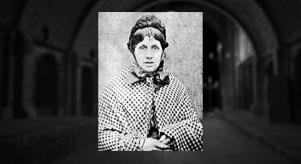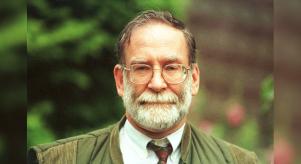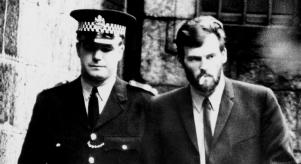
Five Incredible Prison Escapes
Escaping from a prison is the stuff of action films and adventure stories, yet in reality there have been some truly astounding escapes from some of the worlds most secure institutions. Some of these breakouts were the work of criminal masterminds with a vast fortune and network of contacts at their disposal. On other occasions however, the escapes were the product of desperate and ingenuitive prisoners, acting alone or in small groups. Here are five of the most incredible prison escapes to date.
Joaquín Archivaldo Guzmán Loera AKAEl Chapo Guzmán ("Shorty Guzmán") is a Mexican drug lord who is said to head up the Sinaloa Cartel, a criminal organization named after the Mexican Pacific coast state of Sinaloa. Guzmán reportedly became Mexico's top drug kingpin in 2003 after the arrest of his rival Osiel Cárdenas of the Gulf Cartel. He is considered the "most powerful drug trafficker in the world" by the United States Department of the Treasury and has appeared on Forbes Magazine's Most Powerful People in the World list three times.
Guzmán was arrested in 1993 and imprisoned in Mexico. On 19 January 2001, Francisco "El Chito" Camberos Rivera, a prison guard, opened Guzmán's electronically operated cell door, and Guzmán got in a laundry cart that maintenance worker Javier Camberos rolled through several doors and eventually out the front door. Guzmán was then transported in the trunk of a car driven by Camberos out of the town. At a gas station, Camberos went inside, but when he came back, Guzmán was gone on foot into the night. According to officials, seventy eight people were implicated in the escape plan, which was reported to have ultimately cost Guzmán $2.5 million. In 2014 Guzmán was arrested for a second time, this time imprisoned in Federal Social Re-adaptation Centre No. 1, a maximum-security prison in Almoloya de Juárez, State of Mexico.
On July 11th 2015, after Guzmán had not returned from the only blind spot in his cell not covered by security cameras for twenty-five minutes, guards entered to investigate. It was discovered he had escaped through a tunnel leading from the shower area to a construction site less than a mile away. The tunnel lay thirty-three feet underground, and Guzmán used a ladder to climb to the bottom. The tunnel was just under six foot high and only 75 cm (30 inches) wide. The tunnel was equipped with artificial light, air ducts, and was made of high-quality construction materials. A motorcycle was also found in the tunnel, which authorities think was used to transport materials and possibly Guzmán himself. Despite all these effort however, Guzmán was re-arrested in a huge raid code-named Operation Black Swan in January 2016. He is currently held in a prison near Ciudad Juarez, close to the border between Mexico and Texas.
Arrested on September 12th, 2012 on suspicion of robbery, Choi Gap-bok was placed in cell with only a six by eighteen inch gap in the bars for food to be passed through. On the 17th September, while his guards were asleep, Choi Gap-bok somehow squeezed through the narrow gap and made his escape. He was recaptured six days later and placed in a cell with a smaller serving hatch.
Alcatraz Island is located in the San Francisco Bay, 1.25 miles (2.01 km) offshore from San Francisco, California, United States. The small island housed a maximum high-security federal prison – The Alcatraz Federal Penitentiary – between 1933 and 1963. During its 29 years of operation a total of 36 prisoners made 14 escape attempts (two men trying twice). 23 were caught alive, six were shot and killed during their escape, two drowned, and five listed as "missing and presumed drowned".
Of those last five, there are many who suspect that three might just have made it. On the night of June 11th, 1962 inmates Allen West, Clarence Anglin, John Anglin and Frank Morris tucked dummy heads made of a mixture of soap and toilet paper, painted with maintenance shop paint, with hair from the barbershop floor glued to their tops, into their beds. Rolled up towels were used to create body sized and shaped lumps beneath the covers. It was crude, but enough to fool the guards glancing into their cells as they did their rounds that night. The plan was to escape via vents in their cells into an unguarded service corridor. West however, could not exit his cell quick enough and was left behind.
The Anglin brothers and Morris climbed the ventilation shaft to the roof. Carrying an improvised inflatable raft and other equipment they descended a fifty foot wall by sliding down a kitchen vent pipe to the ground. The trio then scaled the twelve foot barbed-wire perimeter fences. At the north-east shoreline—in a blind spot in the prison's network of searchlights and gun towers—they inflated their raft, using a concertina as a bellows. Some time after 10pm, investigators estimated, they departed toward Angel Island, two miles to the north. West co-operated fully with the authorities once the escape was discovered, telling them everything, but, despite several leads, the whereabouts of Clarence Anglin, John Anglin and Frank Morris were never discovered.
On October 12, 2001, Pascal Paynet – an armed robber, involved in several attacks which ended in deaths – escaped from a prison in the village of Luynes in France on board a hijacked helicopter with fellow criminal Frédéric Impocco. Impocco was soon recaptured but Paynet organised a second helicopter escape from the same prison two years later, breaking out three other inmates. All of them were caught three weeks later, in May 2003.
Stalag Luft III was a German Air Force-run prisoner-of-war camp during World War II, housing captured British and Commonwealth Air Force servicemen. In the spring of 1943, captured Squadron Leader Roger Joyce Bushell of the RAF masterminded a plot to breakout not just one, nor a handful of prisoners, but two hundred men.
Big X – as Bushell was known – had a plan to dig three tunnels simultaneously, so that if one were discovered by the Germans there would still be other escape routes available. More than six hundred prisoners were involved in their construction and the tunnels were given the very British code names of Tom, Dick, and Harry. Tom began in a darkened corner of a hall in one of the buildings, Dick's entrance was carefully hidden in a drain sump in one of the wash-rooms, while Harry’s was hidden beneath a stove.
Everything from the candles they used to light the tunnels, to the civilian clothes and forged papers they needed to pass outside the camp, had to be manufactured in secret, made from materials they had managed to steal and hide away. One hundred of the men, including Bushell, were known as "The Serial Offenders", these were men who had good German, and experience of escape attempts (though nothing on this scale). The second hundred were chosen by the drawing of lots and given the nickname of "The Hard Arses". On the night of Friday 24th March, 1944 the escape began. Things however, did not go according to plan. Freezing conditions made things difficult and one of the tunnels came up short of its intended destination.
Despite these and other setbacks a total of 76 men escaped that night, the 77th being seen by guards and forced to surrender. 73 of the men were eventually recaptured. 50, including Big X himself, were executed for their part in the scheme. Of those who survived 17 were returned to Stalag Luft III, two sent to Oflag IV-C Colditz, and four were sent to Sachsenhausen concentration camp, where they managed to tunnel out only to be recaptured soon after. Though ultimately unsuccessful, the scope of the plan along with the ingenuity and bravery of the men involved undoubtedly makes The Great Escape one of histories most incredible escape attempts.




